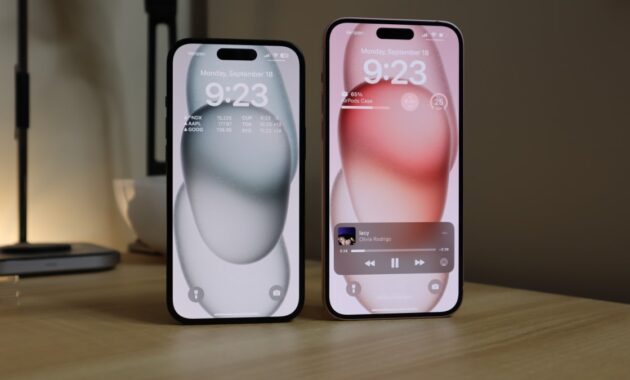
The Dynamic Island and USB-C add “pro” features and make charging the iPhone 15 easier. But an old iPhone is what makes the changes stand out the most.
After using the iPhone 15 for a few days, I can say with confidence that it’s a significant upgrade for current iPhone owners.
The USB-C charging port, which has been placed where the Lightning connector once was, is the biggest new feature. That implies that many other non-Apple devices in your life, including your Mac and iPhone, can all be charged using the same cable. (Although, out of habit, on my first night with the phone, I unintentionally tried to plug a Lightning cable into my iPhone 15). .
The Next Generation of iPhone 15
Apple has always been at the forefront of innovation when it comes to smartphones, and the iPhone 15 and 15 Plus are no exception. With groundbreaking features and improvements, these devices are a big leap from their predecessors.
Design and Display
The iPhone 15 and 15 Plus boast a stunning design with a sleek glass back and an edge-to-edge display. The OLED display is brighter and more vibrant than ever, providing a truly immersive visual experience. The 15 Plus also features a larger screen size, making it ideal for multimedia consumption.
Performance
Under the hood, the iPhone 15 and 15 Plus are powered by the latest A15 Bionic chip, which delivers lightning-fast performance and exceptional power efficiency. Whether you’re gaming, multitasking, or editing videos, these devices can handle it all without breaking a sweat.
Camera
One of the most significant improvements in the iPhone 15 and 15 Plus is the camera system. With a larger sensor and advanced computational photography features, you can capture stunning photos and videos even in low light conditions. The new ProRAW format allows for more flexibility in post-processing, giving photographers greater control over their images.
Battery Life and Charging
With the iPhone 15 and 15 Plus, you no longer have to worry about running out of battery during the day. These devices come with larger battery capacities and improved power management, ensuring all-day battery life. Additionally, they support fast charging and wireless charging, making it convenient to top up your device.
Software and Features
The iPhone 15 and 15 Plus run on iOS 15, Apple’s latest operating system. With a host of new features and enhancements, you’ll be able to do more with your iPhone than ever before. From improved privacy settings to enhanced multitasking capabilities, iOS 15 takes the user experience to a whole new level.
Review:
The iPhone 15 and 15 Plus are undoubtedly the best iPhones Apple has ever made. With their stunning design, powerful performance, and advanced camera system, they offer an unparalleled smartphone experience. Whether you’re a tech enthusiast or a casual user, these devices are sure to impress. Upgrade to the iPhone 15 or 15 Plus, and discover a whole new world of possibilities.
Additionally, the phone has a brand-new second-generation ultra-wideband chip that enables it to pinpoint the precise location of friends and family who also own an iPhone 15. Additionally, the camera now records enough depth information in regular photo mode to enable you to later create a portrait image.
The iPhone 15 and 15 Plus heavily emulate the features of the iPhone 14 Pro, allowing users who cannot afford Apple’s more expensive phone to experience some of the “pro” features from that model’s predecessor. That includes the A16 Bionic processor and the Dynamic Island, a special region near the top of the screen for viewing time-sensitive information like your Uber’s ETA. The camera on the iPhone 15 and the iPhone 14 Pro both have a 48-megapixel main sensor, despite the fact that they don’t technically share the same sensor.
For those upgrading from an old iPhone, these changes collectively make the iPhone 15 feel like a significant step forward. (This includes me, an iPhone 12 owner. However, it doesn’t represent a significant departure from Apple’s previous model of phone. If you can still find the iPhone 14 Pro at a discount, it can be difficult to recommend it over last year’s high-end iPhone because it feels more like an extension of that model.
For the 6 point 1 inch model of the iPhone 15, the starting price is $799 (£799, AU$1,499), while the 6 point 7 inch Plus model starts at $899. To learn more about Apple’s new “Pro” line, read my colleague Patrick Holland’s review of the iPhone 15 Pro and 15 Pro Max. The four new iPhones are all currently on sale.
iPhone 15 gets USB-C and a new look
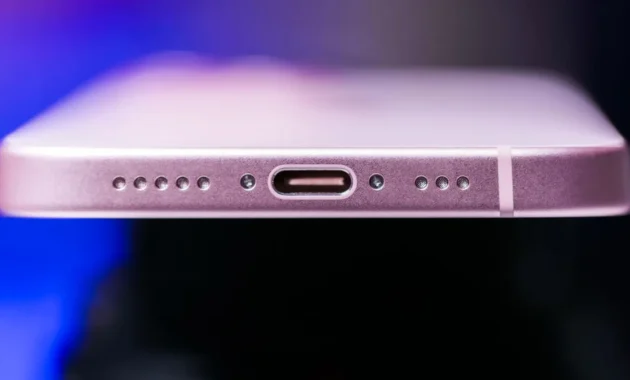
Say goodbye to your Lightning cable. Put your Lightning cable away. The iPhone 15 is the first iPhone to support USB-C charging, which complies with new EU regulations requiring smartphones sold in Europe to adopt the common charging standard. Rather than a Lightning cable, a USB-C charging cable is provided in the box.
For many years, USB-C has essentially been the norm for the majority of electronic devices (laptops, tablets, phones, and wireless earbuds). The iPhone, however, has been the lone significant USB-C outlier, so the transition is significant. The charging port is present on even more recent Apple devices, including newer iPad models.
The main advantage for iPhone 15 owners is a more convenient and, in some cases, quicker charging process. The standard iPhone 15 can recharge its battery by up to 50% in 30 minutes with a 20-watt adapter, but if you plug it into the charger that came with your Mac, it will charge at a faster 27W rate.
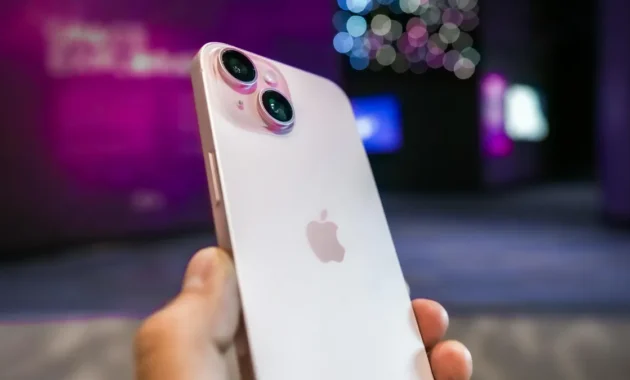
The iPhone 15 Pro and Pro Max, which support USB 3, can, however, transfer data more quickly. Similar to how the Lightning port on the iPhone 14 and 14 Pro from a year ago supported USB 2 transfer speeds, so does the iPhone 15.
The iPhone 15’s new charging port can also be used in another manner. The iPhone can be used to recharge other devices. By connecting the case to my iPhone 15 via USB-C, I was able to charge the AirPods Pro 2, which Apple now sells with a USB-C case.
If you already own AirPods or an older iPad that uses Lightning as its power source, switching to USB-C might not feel immediately convenient. Long term, though, it will be beneficial.
The iPhone 15 is also compatible with the brand-new Qi2 wireless charging protocol in addition to supporting Apple’s MagSafe magnetic charging system. When those accessories eventually launch, it should be simpler to align the iPhone 15 correctly on non-MagSafe Qi2 wireless chargers.
For those of you who prefer not to use a phone case, there is also some good news. The new finish on the iPhone 15 feels more upscale and doesn’t attract as many fingerprint smudges. According to Apple, the cloudy appearance is a result of color being infused into the back glass. It almost makes me think of the Galaxy S23, which also has a matte appearance but has glossy rather than aluminum edges.
I haven’t had to wipe away fingerprint smudges on the iPhone 15 yet because I have so far had the guts to use it without a case.
The iPhone 15 now has the Dynamic Island
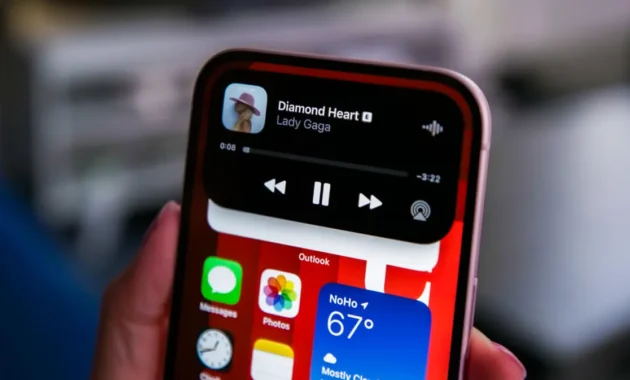
It is no longer just Apple’s Pro iPhones that have the Dynamic Island, a tiny cutout for viewing sports scores and managing Spotify. Now that it’s available on every member of the iPhone 15 family, it no longer serves as an optional extra for specialized “pro” users but rather is a part of the standard iPhone experience. The expansion of The Dynamic Island also signals the end of the notch screen cutout on new flagship iPhones, which first appeared on the iPhone X in 2017.
On the iPhone 14 Pro, Apple introduced the Dynamic Island as a way to manage music playback and stay on top of time-sensitive updates without having to switch between apps. The Dynamic Island does add some convenience, but I don’t think it changes the game. I use it, for instance, to skip tracks in Spotify without opening the app and monitor the performance of my fantasy football team. Since I can control my Spotify playlist and keep Slack open on the screen at the same time, I could see it being especially useful when I use my lunch break to squeeze in a workout.
The Dynamic Island isn’t enough of a justification to upgrade. However, I appreciate that it improves the iPhone’s multitasking capabilities, which is significant given that the iPhone lacks the split-screen mode found on Android smartphones. There is no learning curve because, for the most part, the Dynamic Island operates automatically.
In comparison to the iPhone 14, Apple also increased the brightness of the display on the iPhone 15. Another similarity is that the brightness is now on par with the iPhone 14 Pro. Despite the fact that the iPhone’s screen was already bright enough to be seen comfortably in the sun, this was apparent when I side-by-side compared the screens of the iPhone 15 and iPhone 14.
The iPhone 15 should have an always-on display, too
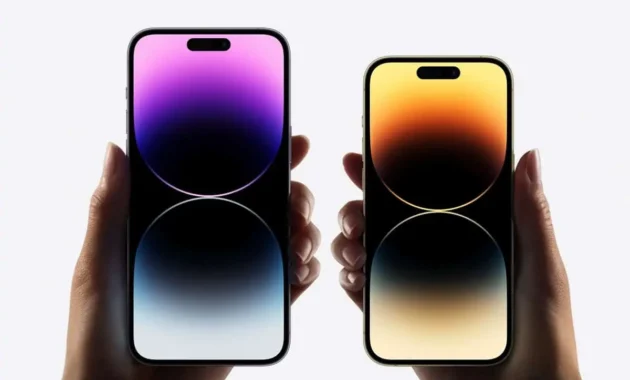
However, I was hoping to see an always-on display, which is one “pro” feature that the iPhone 15 is missing. Beginning with the iPhone 14 Pro from a year ago, Apple’s professional devices can display information like the time and date even when the screen is off. Without actually picking up your phone and unlocking it, it is now simpler to quickly glance at bits of data.
With iOS 17, a brand-new function called Standby mode has made that always-on display even more beneficial. Your iPhone will show large clock faces and widgets when it is charging in landscape orientation, effectively transforming it into a miniature smart display. But without an always-on display, the iPhone 15 eventually turns into a black rectangle rather than continuously displaying the time and my calendar.
I don’t believe the always-on display belongs in the category of features that should be reserved exclusively for the iPhone 15 Pro. The new A17 Pro processor, the titanium body, the dedicated telephoto lens, the Action button for programming shortcuts, and a host of other features set the iPhone 15 Pro apart from the regular iPhone 15. The always-on display, like the Dynamic Island, seems like it should be a standard feature of the iPhone experience, especially considering that the majority of rival Android phones in this price range and below have the feature.
The iPhone 15 gets a camera upgrade
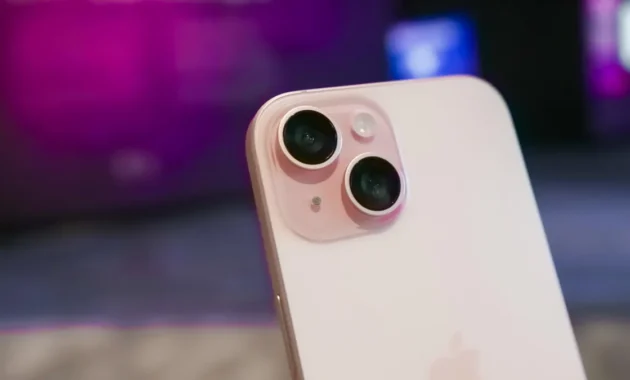
The resolution of the camera on the basic iPhone has finally increased. The standard iPhone has had a 12-megapixel camera system for the past few generations, but the iPhone 15 has a new 48-megapixel sensor that takes photos at a default resolution of 24-megapixels. Compared to earlier iPhones like the iPhone 12, the image quality of the iPhone 15 significantly improves thanks to this and its improved dynamic range.
The 24-megapixel photos taken by default on the iPhone 15 are vivid, detailed, and sharp. Zooming in makes the improvements more obvious, even though they aren’t always immediately apparent when compared to the iPhone 14. At work, taking pictures of people was where I most clearly noticed the iPhone 15’s new camera.














